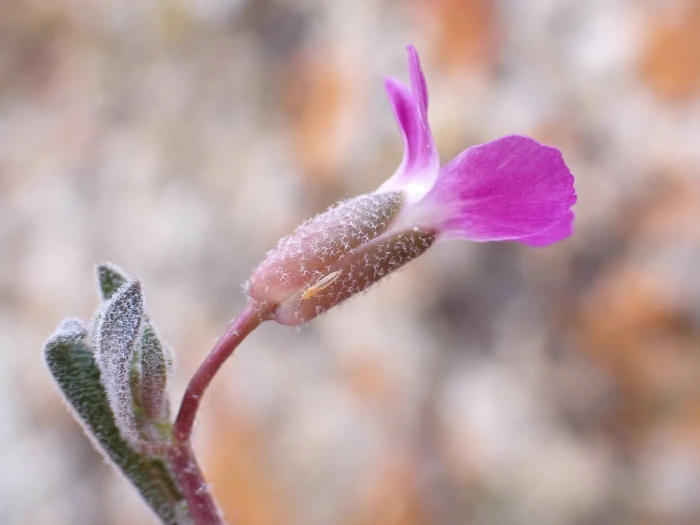Beautiful Rockcress
(Boechera pulchra)
Beautiful Rockcress (Boechera pulchra)
/
/

© Madeleine Claire
CC BY 4.0
Image By:
© Madeleine Claire
Recorded By:
Copyright:
CC BY 4.0
Copyright Notice:
Photo by: © Madeleine Claire | License Type: CC BY 4.0 | License URL: http://creativecommons.org/licenses/by/4.0/ | Uploader: madily | Publisher: iNaturalist |

























Estimated Native Range
Climate Requirements for Jerusalem, Israel
| This Plant | Your Site | Plant Suitability for Your Location | ||
|---|---|---|---|---|
| • Precipitation | 3" - 36" | 17" | Your precipitation may be too high for this plant. | Too high |
| • High Temp. | 69°F - 108°F | 83°F | Your summer temperatures are normal for this plant. | Excellent |
| • Low Temp. | 4°F - 41°F | 40°F | Your winter temperatures are normal for this plant | Excellent |
This plant may not grow well at your location - your precipitation is too high.
Summary
Boechera pulchra, commonly known as beautiful rockcress, is a perennial herb native to the arid landscapes of the Mojave Desert, Great Basin deserts, and the Colorado Plateau and Canyonlands region of the southwestern United States, including southern and eastern California, Nevada, Utah, and Arizona. It is typically found in dry, rocky habitats such as desert scrub, pinyon-juniper woodlands, and montane coniferous forests, mostly below 8,000 feet elevation. Boechera pulchra grows to a height of 12-30 inches tall from a woody base and is characterized by its basal rosettes of leaves and erect flowering stems. The plant features racemes of 8-20 showy purple flowers, which occasionally may be white, blooming from April to June.
The beautiful rockcress is valued for its drought tolerance and ability to thrive in poor, rocky soils, making it a suitable choice for xeriscaping and rock gardens. Its striking purple flowers add color to arid landscapes and can attract pollinators such as bees and butterflies. In cultivation, it requires minimal maintenance, thriving in full sun with low water requirements and well-drained soils. While not commonly used in large-scale landscaping, it can be an interesting addition to native plant gardens and restoration projects. It is not known to have significant disease problems or aggressive roots, but its habitat preferences should be considered to ensure successful cultivation.CC BY-SA 4.0
The beautiful rockcress is valued for its drought tolerance and ability to thrive in poor, rocky soils, making it a suitable choice for xeriscaping and rock gardens. Its striking purple flowers add color to arid landscapes and can attract pollinators such as bees and butterflies. In cultivation, it requires minimal maintenance, thriving in full sun with low water requirements and well-drained soils. While not commonly used in large-scale landscaping, it can be an interesting addition to native plant gardens and restoration projects. It is not known to have significant disease problems or aggressive roots, but its habitat preferences should be considered to ensure successful cultivation.CC BY-SA 4.0
Plant Description
- Plant Type: Herb
- Height: 0.5-1.5 feet
- Width: 0.5-1 feet
- Growth Rate: Moderate
- Flower Color: Purple
- Flowering Season: Spring
- Leaf Retention: Evergreen
Growth Requirements
- Sun: Full Sun, Part Shade
- Water: Low
- Drainage: Medium, Fast
Common Uses
Bee Garden, Butterfly Garden, Low Maintenance, Rock Garden
Natural Habitat
Native to desert scrub, pinyon-juniper woodlands, and montane coniferous forests
Other Names
Common Names:
Scientific Names: Boechera pulchra, Arabis pulchra, Arabis pulchra, Arabis pulchra var. pulchra, Arabis pulchra var. typica, Boechera pulchra var. pulchra
GBIF Accepted Name: Boechera pulchra